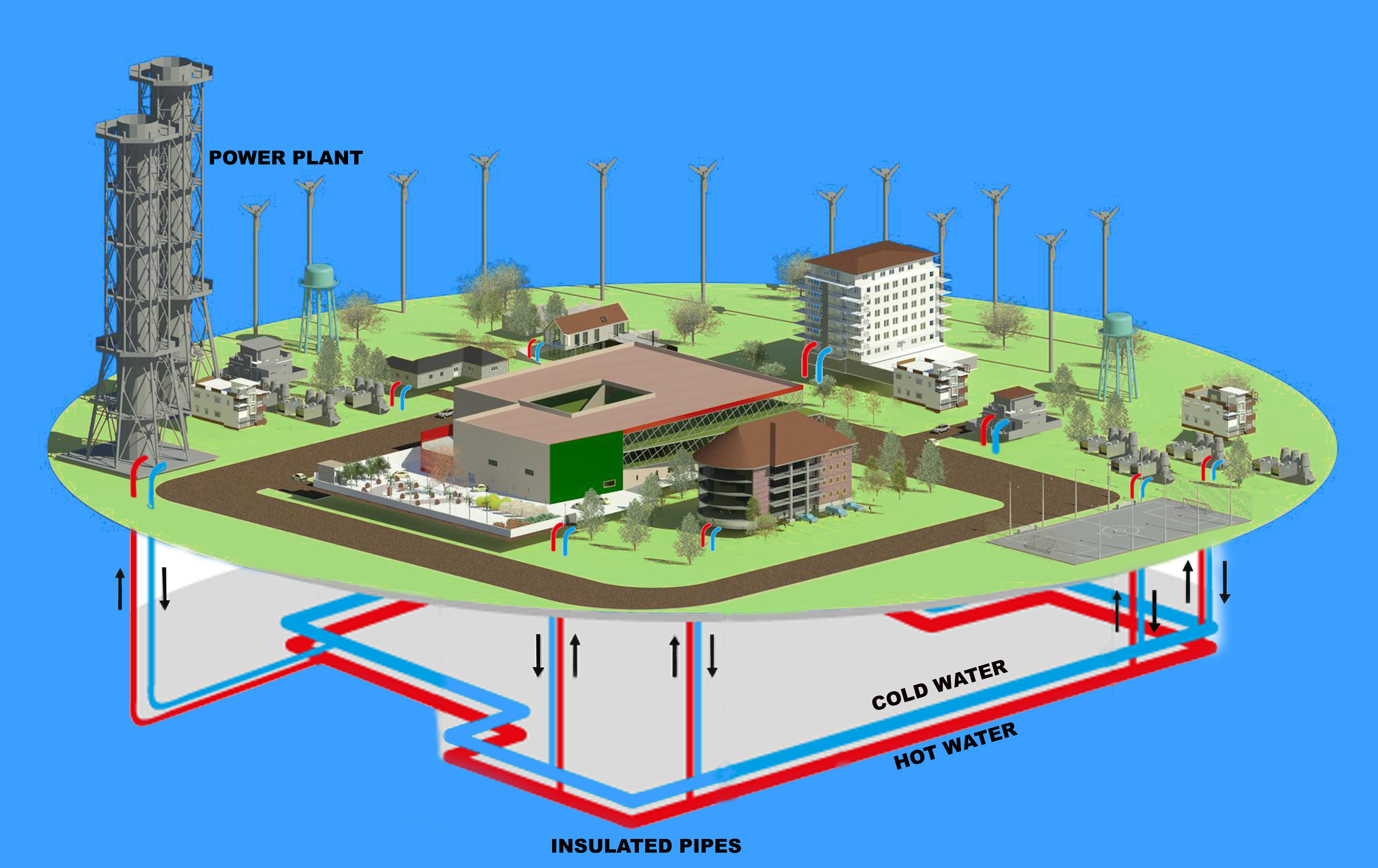District Heating – A Climate Solution
A blog on district heating.
Countries around the world have become aware of the dangers of global warming and have decided that it is time to tackle climate change. Europe has set a goal to reduce its CO2 emission by 80% by 2022. Other countries have also set similar goals. To significantly reduce CO2 emissions, we must gradually improve the efficiency of their energy production systems and at the same time switch to more renewable sources of energy. And cities are looking at a complete redesign of their heating systems as a possible solution to cut down on their carbon emissions.
Currently, in the UK the most popular heating system is an individual gas boiler. Studies show that, due to its ability to use diverse heat sources and cheaper fuels as well as its highly efficient technology, the new district heating system is the most cost-efficient and competitive solution compared to different individual heating technologies.
In district heating, a large central boiler is used instead of many individual boilers. There are many heats source options for generating energy, such as gas combined heat and power, energy from waste, renewable energy sources like a heat pump, biomass, and anaerobic digestion.
Today 40% of the energy consumed in Europe is for heating. Most of the heat is provided by oil and gas boilers located in individual buildings.
Currently, the heat wasted during electricity production in Europe is more than what is required to heat all of the buildings in Europe. This waste of heat disappears into the sea, river, and atmosphere. If we can collect this waste heat from the power plant, we can deliver it to consumers who can then buy this heat as needed.
District heating can solve both of these problems. This is a proven technology with which industries in Europe can collect enough heat to supply 50 million households. In the future buildings may be able to buy their heat from a public grid, just like electricity by using an open-source district heating system. These networks may integrate many different types of renewable energy and make it possible to reduce wastage of heat.
Generations of district heating
The first-generation district heating of the 1880s was based on the distribution of heat through steam. The second generation of the 1930s was based on pressurized hot water with temperatures above 100 C. The third generation in the 1970s was also based on hot water but included temperatures below 100 degrees Celsius, usually prefabricated parts. Many suffered from poor temperature control systems. The fourth generation is based on a water supply with a low temperature of 65 C.
A fifth-generation network uses an ambient ground temperature distribution circuit. Each building in the network uses a heat pump in its plant room to transfer heat to the building when needed and to transfer heat outside the building when cooling is required.
How it works
District heating systems start by heating water in a water boiler. When the water boils, it produces steam which is then let out at enormous speed. The hot steam at high speed sets a rotor of a turbine in motion, generating electricity which is then distributed into the electrical grid. The steam.
continues its journey until it collides with a bunch of steel pipes in a heat exchanger. This steam will now heat up the water inside the pipes to a temperature of around 70-100 Degree Celsius.
The water then travels through an underground insulated pipe network to a heat interface unit, located in each building. This provides the same level of control as individual heating and each house still has the ability to individually control its own temperature requirement. This is one of the smartest things about the plant; it’s a combined heat and powerplant. This means that through the district heating network the steam can be used to generate electricity and heat up stock homes.
The electricity produced here every year can power around 10 million electric cars and supply heat for 50 million homes. As of now, in many parts of the world, the steam is cooled down on special cooling towers meaning that 60% of energy from the fuel goes up like smoke.

The future of district heating
Low-temperature district heating and digitalization
Low-temperature district heating and digitalization can transform district heating into a smart network bringing with it enormous cost-benefit. Low supply temperature is one of the key factors in operating a district heating plant with high efficiency. Low supply temperatures have several benefits in a district heating system such as increased electrical output from power plants, increased heat recovery from industrial excess heat and geothermal heat, and an increased coefficient of performance if heat pumps are utilized in heat generation. There is great potential here as the buildings have had good insulation for years. Heat consumption is generally reduced and, of course, it helps to heat the building well even at low temperatures.
Digitalization is opening up enormous opportunities in this area. The district heating system must be precisely matched, i.e., the heating surfaces of the building must match the given temperature in the building, and this balance is not easy to achieve. But today's digital device enables you to accurately determine the heat requirement of a building and make district heating systems easy to implement.
In future energy systems, digitalization will play a serious role and can make energy systems smarter, more efficient, reliable, and ready to make use of more renewable energy.







.png)




No comments yet